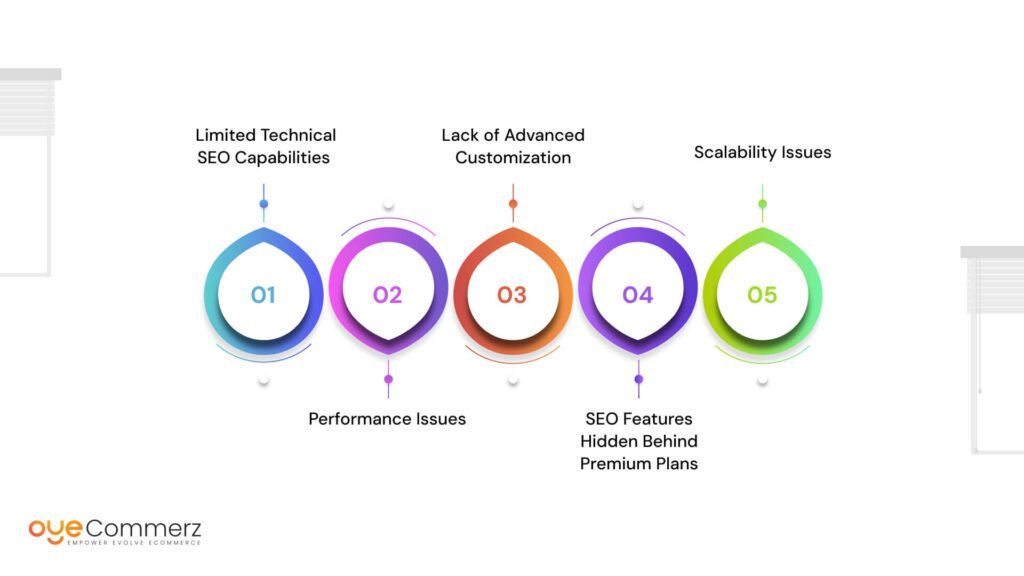In the current digital environment, selecting the appropriate e-commerce platform is crucial for enterprise success. If you're presently using Wix but thinking about a switch to Shopify, you're not alone. Many companies are transitioning to Shopify to take advantage of its robust capabilities, expandability, and specialized e-commerce tools. This guide will walk you through the migration process, guaranteeing a smooth move and setting you up for e-commerce success.
Why Migrate from Wix to Shopify?
Before diving into the transition process, it's important to recognize why Shopify might be a better fit for your e-commerce requirements:
- E-commerce Focus: In contrast to Wix, which caters to various use cases, Shopify is engineered exclusively for e-commerce, offering sophisticated features and functionalities tailored for digital commerce.
- Scalability: As your business expands, Shopify can easily handle higher visitor volumes and sales capacity without compromising performance.
- Wide-ranging App Ecosystem: Shopify provides a large library of apps that can enhance your store's capabilities, from marketing tools to inventory management solutions.
- Search Engine Optimization: Shopify offers superior SEO tools, which can assist in improving your store’s visibility on Google and others.
- Payment Options: With multiple transaction platforms available, including Shopify Payments, you can provide shoppers a variety of options.
Getting Ready for Transition
To guarantee a trouble-free migration from Wix to Shopify, follow these preparation steps:
1. Backup Your Data
Download all your information from Wix, including product details, customer information, and transaction logs. This process is crucial as it guarantees you have a copy of everything before initiating the migration.
2. Select a Pricing Option
Assess the various Shopify subscriptions offered and choose one that best suits your business requirements. Take into account factors such as costs, built-in tools, and growth potential.
3. Set Up Your Shopify Account
Register your Shopify profile and explore the platform’s interface and features.
The Migration Process
Now that you are ready, it’s time to migrate your store from Wix to Shopify. Here’s how:
1. Import Products
Utilize Shopify's built-in import tool or third-party migration apps like Cart2Cart or LitExtension to transfer your products from Wix to Shopify.
Make sure that product descriptions, images, costs, and options are accurately imported.
2. Migrate Client Information
Import customer information such as names and contact info into your new Shopify store. This process is critical for maintaining customer relationships and advertising strategies.
3. Configure Transactions
Set up payment gateways in your Shopify store to ensure seamless payments. You can choose from multiple options like debit methods, PayPal, and more.
4. Customize Your Store Design
Select a theme that reflects your brand identity. Modify it using Shopify's customization options to create an appealing and user-friendly store layout.
5. SEO Optimization
Apply SEO best practices during the transition process:
- Set up 301 redirects from old Wix URLs to new Shopify URLs.
- Enhance product titles, details, and photos with relevant keywords.
- Modify meta tags and alt texts for improved search engine visibility.
Post-Migration Steps
Once your store is active on Shopify, consider these post-migration steps: SEO optimization
1. Check Your Website
Perform comprehensive testing of your new store:
- Check product pages for correctness.
- Verify payment processes.
- Ensure all hyperlinks work correctly.
2. Launch Marketing Campaigns
Broadcast your new store launch through newsletters and social media channels.
Consider offering special offers or sales to attract customers.
3. Monitor Performance
Leverage analytics tools within Shopify to monitor revenue growth and user activity.
Modify your strategies based on performance analytics.
Conclusion
Migrating from Wix to Shopify can significantly improve your e-commerce capabilities and set the stage for growth and achievement. By following this guide and taking a systematic approach to the Promotional campaigns migration process, you can ensure a seamless transition that minimizes downtime and boosts opportunities for revenue. Embrace the change and see your online business thrive on its new platform!
